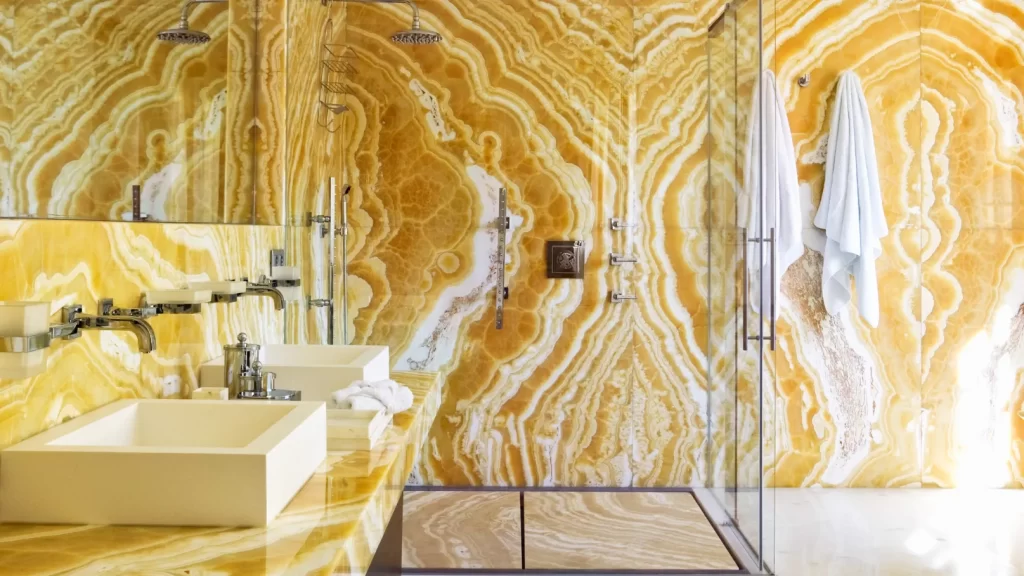
Creative and Artistic Approaches to Plumbing Design
Even plumbing – a profession we might not expect to use artistic examples to illuminate – can be an art. A choreographed water show, mirrored in a fountain, might be intended only as eye-candy but utilising plumbing in artistic ways that marry beauty and practical benefit could be mirrored at my kitchen sink.
Architectural endeavours have seen groundbreaking plumbing designs evolve through a combination of adopted emerging technologies and a common goal of sustainability. Such innovative plumbing designs are accentuated in creative ways, which highlight beautiful plumbing design, such as:
Outdoor Furniture
And if you already keep your indoor space well-appointed and stylish – with cushions, rugs, coffee tables, and lamps – then weather-resistant furniture is one of the easiest and most affordable ways to bring your outdoor space in line with the rest. A vast array of styles means that your perfect furniture already exists, waiting just for you.
Over time, forms had adapted to consumer needs for weather-resistance and comfort. Mid-century modernism also influenced outdoor furniture shapes with its emphasis on clean lines.
Poly-lumber or recycled milk jug furniture shows itself to be one of the most UV protected and water proof patio furniture choices, along with being durable and having low maintenance needs, according to Schleis. ‘Wash with mildew/mildew cleaner like Simple Green every once in a while, rinse, then let air dry,’ says Schleis on the proper upkeep, ‘or store in the garage during extreme climate conditions.’
Exposed Pipes
Much of the plumbing that comes into modern buildings – from your bathroom pipes to the fountain in your local park – is a work of art. When you talk about innovative designs, creativity and the importance in using good plumbers for your draining or pipework project, would people really care?
The fabulous dancing water fountains in front of the hotel at Bellagio, which light up the nightly sky in Las Vegas with a spectacle of music, light and movement, are no match for the art architects and plumbers can create using water, as the tunnel and rafting rides in theme parks demonstrate.
The fact that we categorise paintings of high aesthetic value differently from those that depict your true monochromatic wardrobe doesn’t mean that decorative boxing is the pre-established thoughts on these matters, except in the context of the carpenter’s occupation. Looking for in the carpenter’s visual repertoire the philosophical-level project of reconciling our ideas of beauty, art, multiple ontologies and the nature of perception is asking too much – after all, carpenters are not Hegelians. Instead, his building instructions give us a unique, small-scale window into the history of human imagination and the origin and purpose of art, and how both gradually shift over time. The homeowners who specifically look up solutions to hide unsightly pipes because they find them ugly or just want to elevate the aesthetics of their home, should take decorative boxing into serious consideration – particularly if it’s the world of attractive design, and not painting them in matching wall colours, that appeals to their aesthetics. As is the case with any other kind of embellishment, maintenance requires access to the pipes, meaning any boxes concealing the pipes must provide access laths or panels.
Smart Technologies
Technological updates have brought convenience to many facets of our lives, and plumbing solutions have never been more accessible. Cutting-edge monitoring and supervision over one’s water-related systems has become possible through varying smartphone apps, remote controls, and with the assistance of voice assistants available on one’s device. Thanks to these latest and accessible plumbing updates, homeowners are able maximise their homes for effective use of energy, minimise water-waste, and prevent various possible leaks in the system.
Nowadays plumbing systems are part of the architectural project. For example, we have the Bullitt Center project in Seattle, with environmentally respectful plumbing that saves water, and other ways that water-saving faucets, greywater uses and cisterns, composting toilets and non-plumbing uses are being incorporated as part of the artistic expression of plumbing.
Plumbers need some kind of technical imagination to think of plumbing connections, pipes and lines that can be both functional and pleasing to the eye; plumbing engineers make use of their own creativity and imagination to design functional and beautiful plans — for water (fountains, or themed parks) for example.
Water Features
From turtles and cherry trees to luminous waterfalls, the incorporation of water niches – from simple fountains that can display phosphorescent light shows, to elaborate waterfalls and cascades, invariably sparkle and swirl, enhancing visual interest while adding flowing, fluid movement to soften hard edges, and help mask ambient noise levels as well.
Contemporary plumbing layout typically involves not one, but a couple of mechanisms for water conservation. This can come in the shape of low-flow fixtures, greywater installations or whatever new inventions present themselves for cutting back on water usage while still preserving our finite water supplies.
Plumbing design that can be called form as well as function is more than a fashion – it is about entertaining new needs, in an ever-shifting, globalised word. Plumbers allow us to have these innovations without losing the things that make plumbing beautiful.
